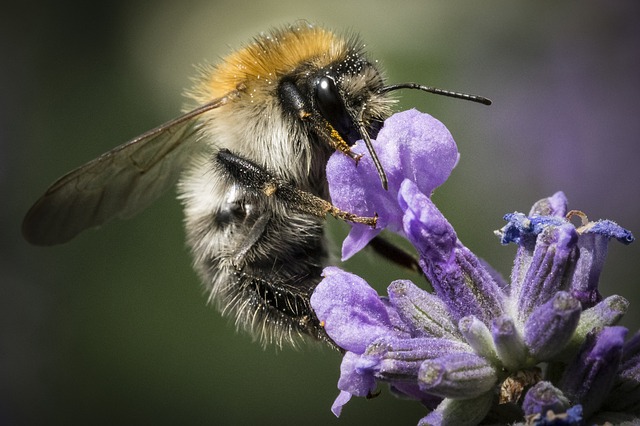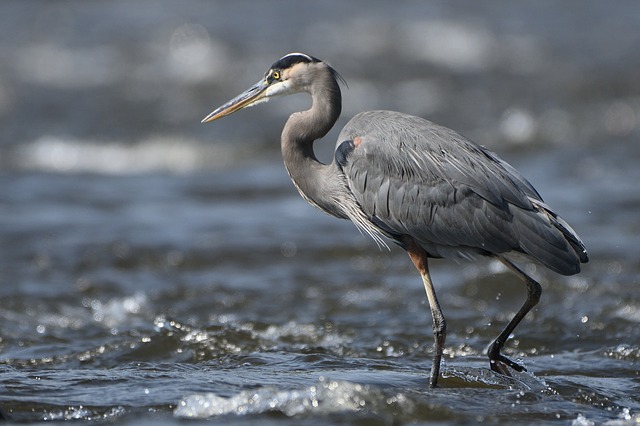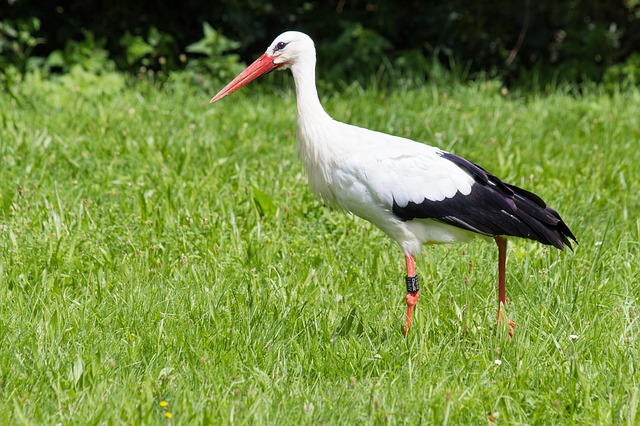
Chances are if you’ve been paying even a little bit of attention, you’ve heard about the “beepocalypse.” Depending on the source, you’ve likely seen varying levels of concern. While some experts are simply following the phenomenon, others are downright alarmed.
Regardless of who you ask, there are a few inarguable truths one must understand about the state of bees across the world. It’s entirely true, for example, that bees have been disappearing at much higher rates than usual for more than a decade. It’s also undeniable that we need bees. In addition to playing a major role in the food chain and helping to maintain a stable natural environment, bees are primarily responsible for pollinating our food supply.
There are also factors about which we are less certain. Scientists disagree about what’s causing Colony Collapse Disorder, for instance. Some think it’s an epidemic of parasites, while others blame pesticides like neonicotinoids. Many blame climate change. Another theory is that it’s a combination of all these factors.
Aside from all the semantics surrounding where the bees are going and why they’re leaving, there’s one thing everyone agrees on: we can help. From supporting local beekeepers to becoming a beekeeper yourself, there are a slew of ways to help the bee population.
The most popular option by far has been for regular folks like you and me to plant pollinator-friendly gardens in our own backyards. From elementary school students to avid gardeners, concerned citizens far and wide are dedicating themselves to making space for bees and other beneficial insects, providing them with an area all their own in the midst of the general population.
The best thing about these plots affectionately referred to as “bee gardens,” is that they are easy to plant and even easier to care for. Just follow these three simple rules:
Pick The Right Location
Bees, like most wildlife, prefer natural and unmanicured settings. Pick a location at the edge of your property where the blooms can grow freely and close together to prevent unnecessary travel between plants. You should also be sure to leave some dirt uncovered by mulch or foliage so solitary bees can nest.
Finally, bees need water. Muddy puddles are preferable, as they contain salt and minerals from the soil, but small containers of water can work as well. Just be sure to empty and refill the container regularly in order to prevent mosquito larvae and other backyard pests from hatching.
Choose Your Blooms Wisely
The most successful bee gardens include 10 or more different species of plants. Choosing a wide variety of flowers will also attract a wider variety of bees. To keep it simple and cost-effective, plant perennials (flowering plants that return year after year), as opposed to annuals which die after one season.
To reduce maintenance and ensure survival, choose plants native to your area. Or, if you’d prefer to let the experts do the work for you, order a pre-designed bee garden seed kit online.
Steer Clear Of Pesticides
Most pesticides are just as harmful to bees as they are to nuisance insects. Even “natural” solutions will kill the beneficial garden insects you are trying to attract and protect. For this reason, you should avoid using any pesticides in or around your bee garden. If you need to control pests elsewhere on your property, take care to avoid all flowering plants. You should also apply the solution at sundown, after peak bee activity.
It’s that simple. And the best part? It’s working. Thanks to pesticide regulation, improved beekeeping practices, and yes, bee gardens, bee populations have rebounded over the past several years. Still, in order to maintain honeybee health and the foods that they pollinate for us, we have to continue to do our part. So let’s get planting!
Start Shopping for Bee Keeping Supplies!
Goose Pictures
Geese are a group of waterfowl species that belong to the family Anatidae. Not only are they beautiful but there are many interesting things about them. We’ve compiled some of the best goose pictures to show you just how amazing these creatures are. Snow Goose The...
Raccoon Pictures
Raccoons are easily recognizable by their black face mask and ringed tail. And there are many fascinating things about this intelligent nocturnal species. So we’ve compiled some of the best raccoon pictures to show you just how amazing and unique they are. Raccoon...
Eagle Pictures
Eagles are large powerful raptors with sharp talons and beaks. These apex predators are typically at top of the food chain and there are many interesting things about them. So we’ve compiled some of the best eagle pictures to show you just how amazing they are. Bald...
Nutria Pictures
Nutria are large semi-aquatic rodents from South America. In the United States where they were originally imported for the fur industry, they are an invasive species. Despite their pest status, there are many interesting things about them. So here are some of the best...
Stork Pictures
Storks are tall wading birds with long legs and necks. These amazing birds have many fascinating things about them. And we’ve compiled some of the top stork pictures to help show you just how interesting and beautiful they are. White Stork The white stork has a body...
Alligator Pictures
The American alligator is a large predatory reptile that inhabits the southeastern United States. It’s a fascinating animal with many interesting things about it. And we’ve collected some of the best alligator pictures to help show you just how amazing they are....
How Long Do Great Blue Herons Live?
The life expectancy of birds is known to be closely related to their size. So as the biggest heron species in North America, how long do great blue herons live? The average life expectancy for these large birds is around fifteen years. However, surviving their first...
Where Do Great Blue Herons Live?
The great blue heron is considered to be the most widespread heron in North America. So exactly where do great blue herons live? Here’s what you’ll want to know. Great Blue Heron Range The great blue heron is found throughout most of the North American continent. In...
Where Do Great Blue Herons Nest?
While many of us have seen great blue herons their nesting habits often remain a mystery to most people. That’s because they purposely nest in hard-to-reach places. So where do great blue herons nest? Here’s the answer. A Colony Nester Typically great blue herons nest...
Do Great Blue Herons Migrate?
Do great blue herons migrate? This is something many people wonder about, especially if they’ve seen a heron during the cold winter months. And the answer is both yes and no. Here’s what you’ll want to know. Great Blue Heron Range The great blue heron has a large...
Great Blue Heron Pictures
Few species of birds are as tall, elegant, and attractive as the great blue heron. So we’ve compiled some of the best great blue heron pictures for you to admire and help you to learn more about this amazing bird! Great Blue Heron Head The head of the great blue heron...
What Do Snapping Turtles Eat?
Many people are familiar with the fact that snapping turtles have an incredibly strong bite. They use their strong jaws and sharp beak not just for defense but also for catching food. So what do snapping turtles eat? Here's what you'll want to know. Snapping turtles...
Birds That Look Like Egrets
Egrets are predatory birds that hunt and live in a range of both freshwater and saltwater habitats. These birds are usually white, and have S-shaped necks, long legs, and dagger-like beaks. However, they are often mistaken for several other types of birds that look...
Birds That Look Like Storks
Storks are large wading birds with robust bills and long legs. These tall carnivorous birds are well-known for their wide wingspans and also for building huge nests. However, they are often confused with several other bird types that have a similar appearance. So...
Birds That Look Like Herons
Herons are tall birds with long slender legs and necks. And they often wade in the water when hunting for food. Yet there are several other types of birds that may be mistaken for them. To make things more confusing many of these birds also spend time in the water and...
Great Blue Heron Facts
The great blue heron is named for its size and the grey-blue color on its wings, stomach, and back. This species has many fascinating things about it. So here are the top great blue heron facts. It's The Largest North American Heron The great blue heron is a big bird...
Are There White Herons?
Are there white herons? This is something many people wonder especially after seeing a tall all-white bird. The answer is yes! And here’s a fast introduction to them. A White Color Morph Most people are familiar with the great blue heron, a large predatory and...
Great White Heron Facts
While many people are familiar with the great blue heron, they are often surprised to find out that there’s also a great white heron. There are many things you’ll want to know about this stunning bird. So here are the top great white heron facts. The Great White Heron...
What Animals Eat Herons?
Because of their size and long sharp beaks, it can be hard to imagine that herons have any natural predators. While they do, they definitely don’t have nearly as many predators as most other types of birds. So what animals eat herons? Predators Of Adult Herons For...
What Do Herons Eat?
Great blue herons are often seen slowly wading in shallow water hunting for food. You may have even spotted one of these large birds in your own backyard pond. This leaves many people wondering: “What do great blue herons eat?” And here’s everything you’ll need to...






















